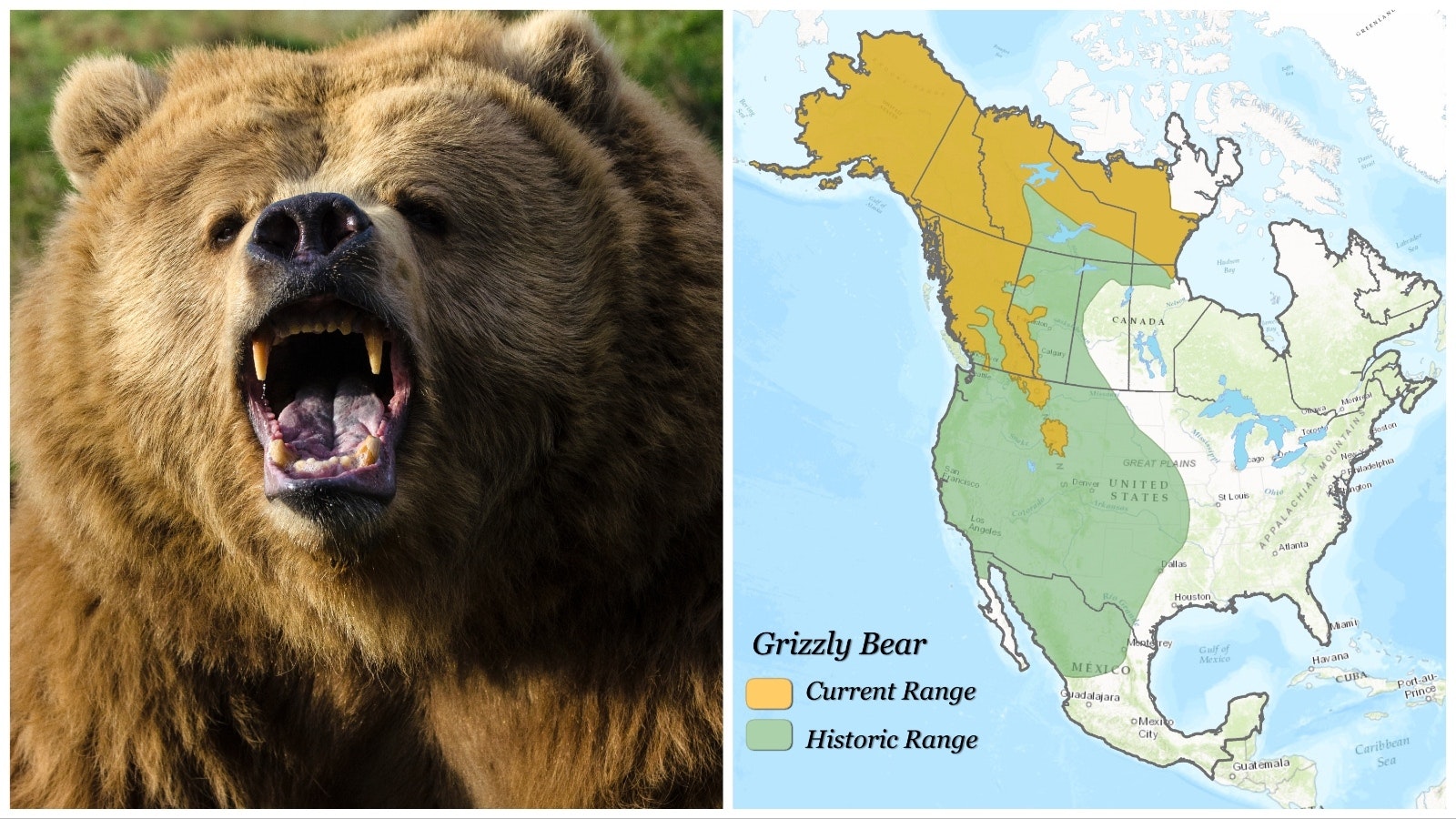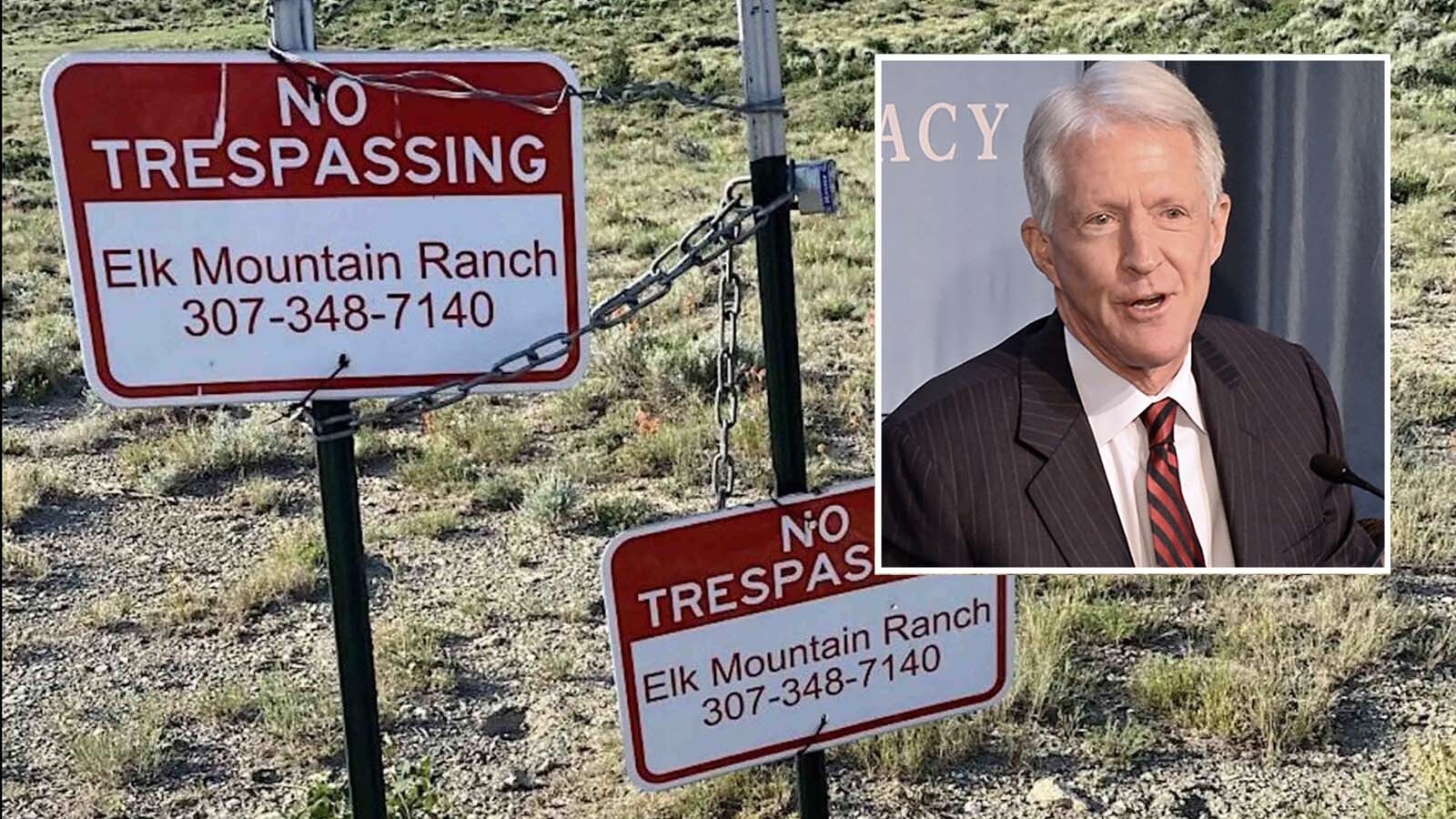If grizzlies had held on to all their historic range, folks in Dallas would be shopping for bear spray and “grizzly jams” would break up the monotony of a drive across Nebraska.
Folks today regard grizzlies as creatures of the mountains and thick alpine forests. However, they evolved for life in wide open country, retired federal ecologist and grizzly expert Chuck Neal of Cody told Cowboy State Daily.
“The bear that we call the ‘grizzly’ in North America evolved on the open steppe-tundra of northern Eurasia, eventually crossing the Bering Land Bridge some thousands of years ago,” he said.
Adaptable Bruins
They went on to occupy a vast territory — nearly the entire western half of what is now Canada and the United States — and deep into Mexico.
Though they might have evolved preferring the plains, grizzlies aren’t particularly picky eaters, and that’s helped them adapt to a huge array of habitats over the millennia, Wyoming Game and Fish Department large carnivore specialist Dan Thompson told Cowboy State Daily.
“Much of our previous knowledge is based on historical accounts, but what we do know then and now is that grizzly bears are extremely adaptable species with high dietary plasticity, meaning they aren't picky eaters and they are good at finding sustenance regardless of the situation,” he said.
“This explains how a grizzly bear could find ground squirrels and yampa root in western South Dakota, but also feed on elk in calving grounds in the Absaroka range high country,” he added.
Did Open Country Make Grizzlies More Aggressive?
It’s been speculated around campfires and in hunting lodges that grizzlies are naturally more aggressive than black bears because they were originally a plains species. The reasoning is black bears always had the option of fleeing into trees or thick brush when confronted. Whereas historically, grizzlies had to stand their ground in open country.
There’s at least some truth to that, Thompson and Neal said.
Even in the Great Plains, grizzlies could have found at least a few places to retreat to, Thompson said.
“Researchers have hypothesized that the more aggressive behavior from grizzly bears has to do with their use of more open habitats when compared to our other non-arctic ursid, the black bear,” he said.
“Black bears are more strongly associated with forested terrain, using trees in response to threats, whereas grizzly bears were documented spreading into the prairies and grassland ecosystems of the Great Plains. But based on historical accounts, these were still associated with river breaks and riparian areas,” Thompson said.
When grizzlies first came across the Bering Land Bridge, it was the “age of Pleistocene megafauna,” and they weren’t then at the top of the food chain, Neal said. So, learning to survive and protect their young in open country might have made them bolder.
“Having evolved those long front claws for digging for root crops on the open steppe-tundra, which were unsuitable for climbing — and having no trees to climb anyway — the bears that survived to reproduce the new generations had to learn to aggressively defend themselves and their young,” Neal said. “This behavior is hard-wired in their DNA and will not change as long as we have a viable grizzly population.
“What I mean by that is if we succeed in killing some 90% of the bears, then the surviving 10% may be so traumatized that they become shy, furtive creatures, more like the European brown bear and no longer a grizzly bear.”
Lasting Impressions
Even though they no longer occupy the Great Plains, grizzlies left a lasting impression there, among both Native Americans and white explorers, Thompson said.
“Native American tribes throughout central and western North America have historical accounts of grizzly bears and many native peoples found spiritual providence in grizzly bears, relating to them in a familial sense,” he said.
The Lewis and Clark expedition had several accounts of “run-ins” with grizzly bears on the plains, Thompson said, adding that they sometimes spelled it “grisly bears” in their accounts.
Could They Return To The Prairie?
Thompson said he doesn’t think that grizzles will ever be allowed to re-occupy their plains habitat or be reintroduced there.
“I feel the potential for conflict between humans and bears would be too high to reintroduce grizzly bears into prairies regions of the past,” he said. “We have to realize how much things have changed in the relatively tiny footprint since areas of Wyoming and other areas in the United States have been ‘colonized.’
“We are fortunate to have many wild places remaining, but the prairies and grassland ecosystems of several hundred years ago are very different.”
Neal said that grizzlies could feasibly reclaim some of the Great Plains “if we accept them,” but nothing anywhere near their past range.
The grizzly is naturally at home in the grassland river bottom riparian areas such as the Yellowstone or Missouri drainages and adjacent upland prairies. There is no question that they could and would recolonize some of this type of habitat if we accept them.
“The grizzly could not only survive but thrive in the Upper Missouri River Breaks at present if we accept them,” he said. “The Little Missouri Badlands in North Dakota, the badlands of western parts of the Bighorn Basin and the northern Red Desert in Wyoming are just a few areas that grizzlies could make a living at low densities at present, if we accept them.”
One cantankerous point would be the question of public land livestock grazing in some areas, Neal said.
“There is plenty of room on public lands for them to expand their range, but the livestock would have to go,” he said. “There are already a few grizzlies denning in some river bottom breaks such as the Marias in Montana.”
The areas grizzlies could return are in the northern plains because “the central and southern plains are too terribly altered for any possibility at present,” Neal said.
The potential for conflict between humans and bears is much higher in the low country than it is in the remote, high-altitude wilderness at the core of their current habitat, Thompson said.
“We can bemoan the past and persecution that occurred or we can celebrate the successful recovery and conservation of the present,” he said.
Mark Heinz can be reached at mark@cowboystatedaily.com.





